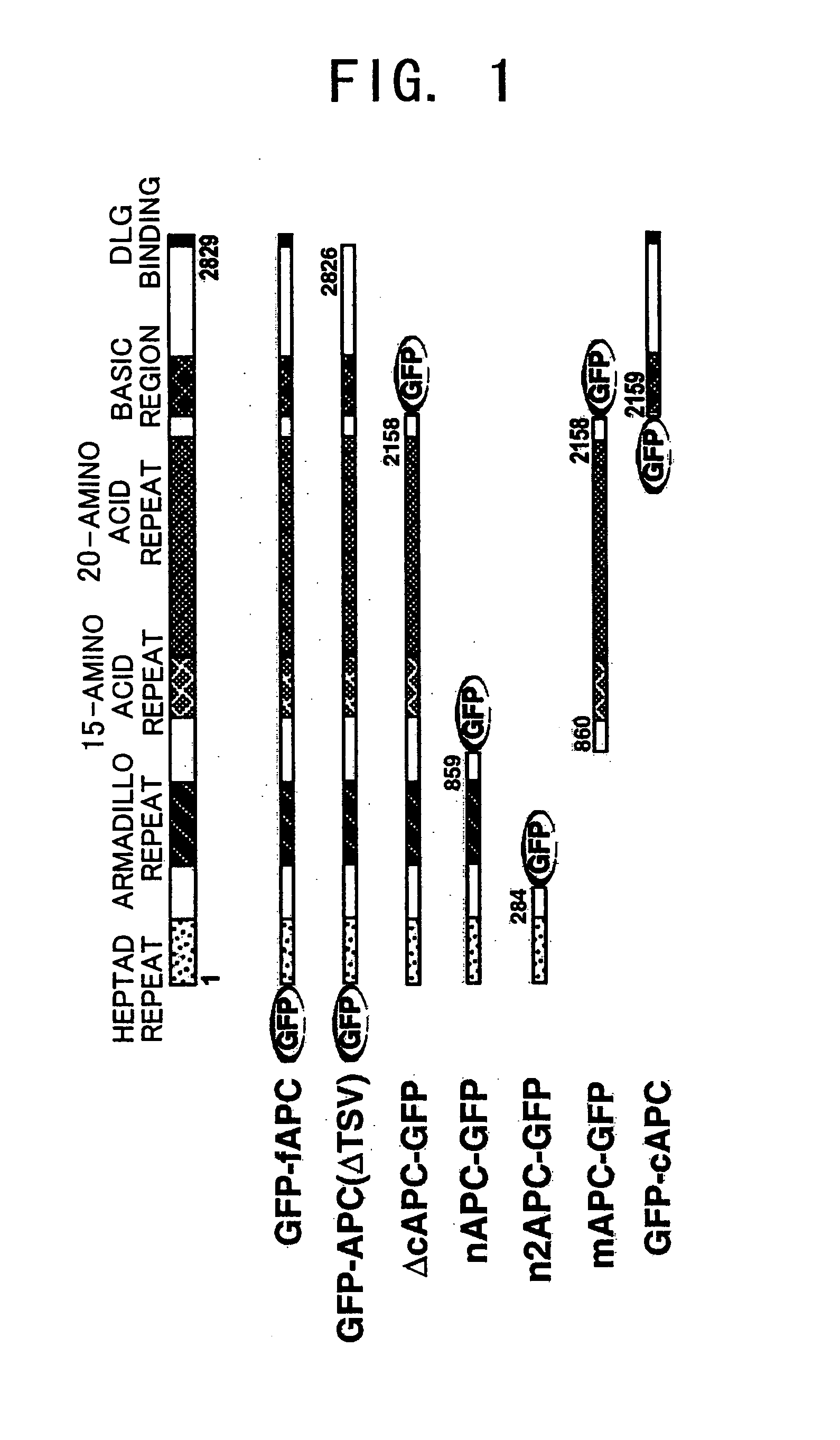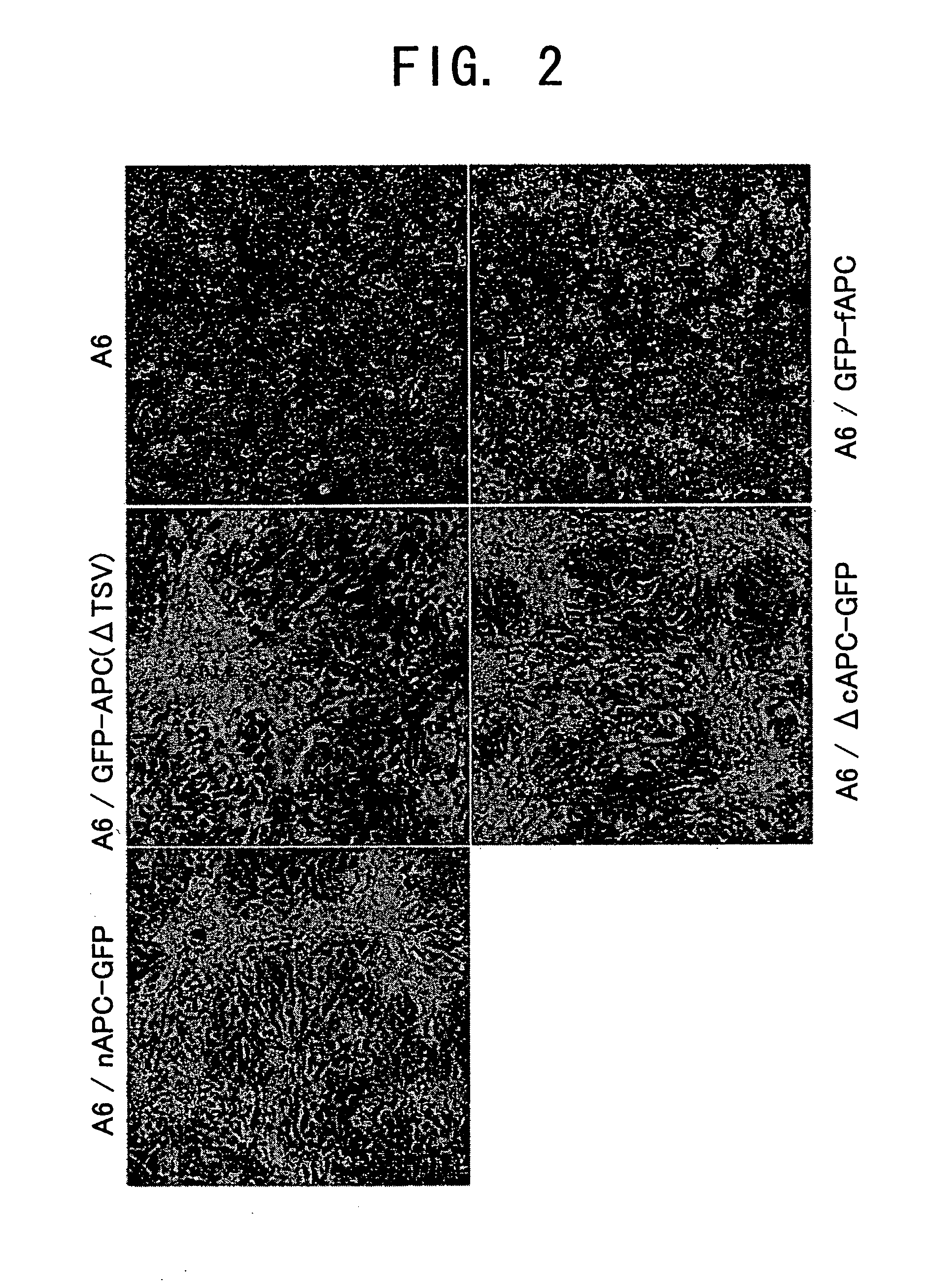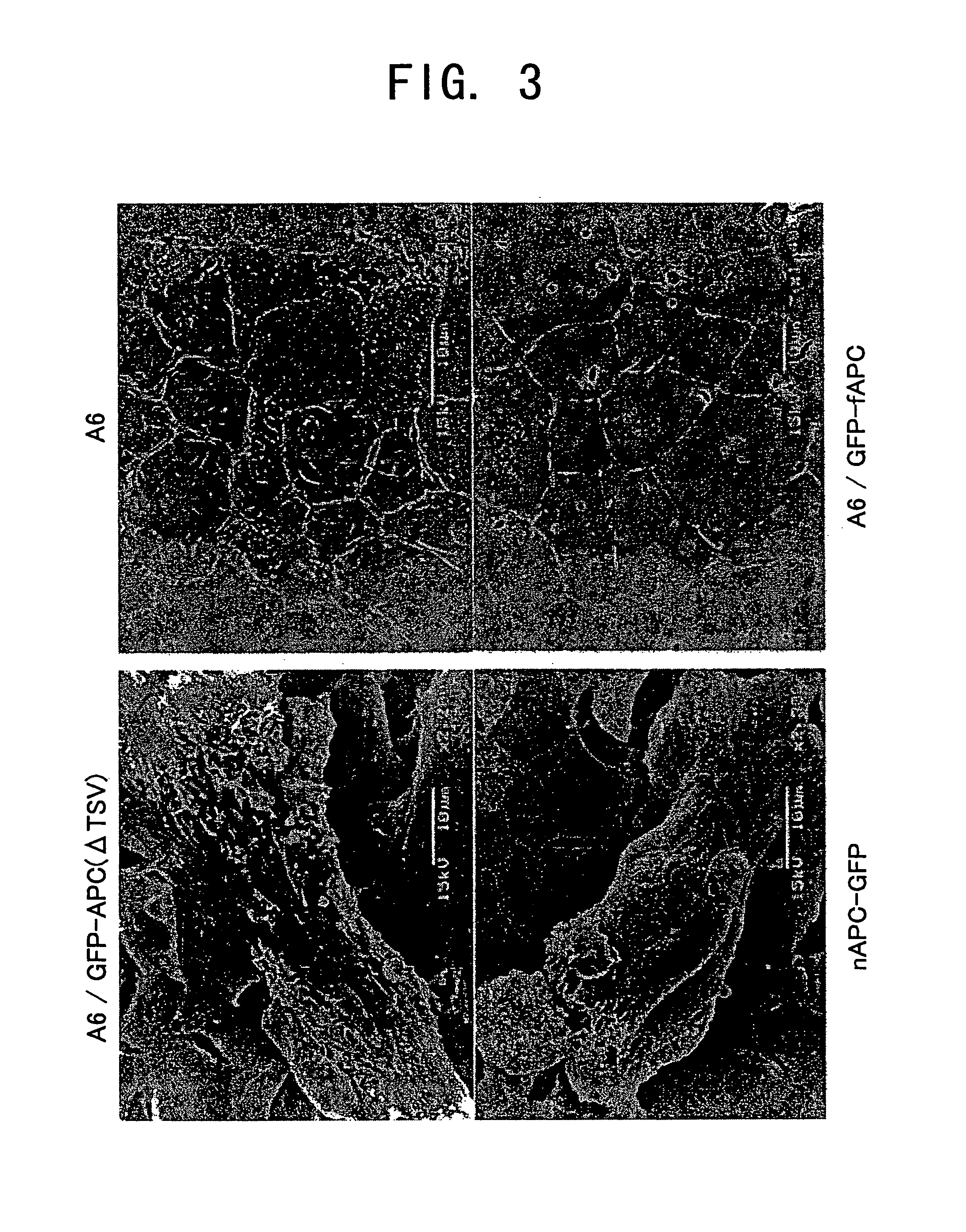Cultured xenopus cell line expressing mutated apc
a cell line and apc technology, applied in the field of mutated apc proteins, can solve the problems of cell growth thought to be cancerous, and achieve the effect of inhibiting cell piling up
- Summary
- Abstract
- Description
- Claims
- Application Information
AI Technical Summary
Benefits of technology
Problems solved by technology
Method used
Image
Examples
example 1
Construction of Autofluorescent Protein GFP (Green Fluorescent Protein)-Fused APCs
[0098] In order to elucidate APC function in detail, a routine procedure was used to prepare expression vectors in which cDNAs carrying different APC sites were fused with the cDNA of an autofluorescent protein, GFP (green fluorescent protein) (FIG. 1).
[0099] The Xenopus laevis APC gene sequence is known and is described in GenBank (U64442). The individual expression vectors were produced by the following procedure. [0100] (a) GFP-fAPC: a vector for expressing GFP-fused full-length APC. Expression vectors, pGFP-C(NheI) / APC(1-8490) and pQBI25 / APC(1-8487), which carry full-length APCs have already been reported in the present inventors' publications. In order to construct a GFP-fAPC expression vector, first, a cDNA containing the 3′ region of APC, which had been excised from pGFP-C(NheI) / APC(1-8490) using XbaI, was inserted into the XbaI site of pEGFP-C1 (Clontech). Then, to the SacII-BamHI site of th...
example 2
Transfer of cDNAs into A6 Cells and Screening
[0111] The inventors established cell lines with stable expression by introducing the vectors obtained in Example 1 into A6 cells.
[0112] APC expression is extremely difficult in many mammalian culture cell lines. Although cells that conditionally express full-length APCs have been reported to date (Mori, P. J. et al., Proc. Natl. Acad. Sci. USA 93 (15): 7950-4, 1996), there are no reports on the establishment of cell lines that stably express foreign full-length and truncated APCs. Therefore, whether A6 cells are appropriate for expressing APC was examined.
[0113] First, a preliminary experiment was performed, in which A6 cells were expressed with GFP-tag only using a pQBI25 vector (QBIOgene) and Effectene transfection reagent (Qiagen). GFP expression was confirmed by observation of a fluorescence-staining image under a fluorescence microscope. Cells expressing a distinct fluorescence signal other than that of GFP were not found in the ...
example 3
Morphological Observation of Cells Expressing GFP-Fused Full-Length and Truncated APCs by Phase Contrast Microscopy
[0115] The morphology of cells expressing GFP-fused full-length and truncated APCs obtained in Example 2 was observed by phase contrast microscopy, and compared to that of the parental A6 cells. Cells were widely spread on a dish at 100% confluency, and cultured for five days or more with a medium exchange every day, until the cells became dense and polarized to an epithelial structure. Parental A6 cells and GFP-fAPC-expressing cells formed a flat monolayer structure having the morphology of an epithelium. However, in GFP-APC(ΔTSV), ΔcAPC-GFP, or nAPC-GFP-expressing cells, bulging regions instead of a flat layer are formed at a certain frequency (FIG. 2). Similar bulging regions were also observed in n2APC-GFP-expressing cells. However, bulging regions were not observed in all of the strains, and were restricted to the cells where the existing GFP fluorescence intensit...
PUM
 Login to View More
Login to View More Abstract
Description
Claims
Application Information
 Login to View More
Login to View More - R&D
- Intellectual Property
- Life Sciences
- Materials
- Tech Scout
- Unparalleled Data Quality
- Higher Quality Content
- 60% Fewer Hallucinations
Browse by: Latest US Patents, China's latest patents, Technical Efficacy Thesaurus, Application Domain, Technology Topic, Popular Technical Reports.
© 2025 PatSnap. All rights reserved.Legal|Privacy policy|Modern Slavery Act Transparency Statement|Sitemap|About US| Contact US: help@patsnap.com



